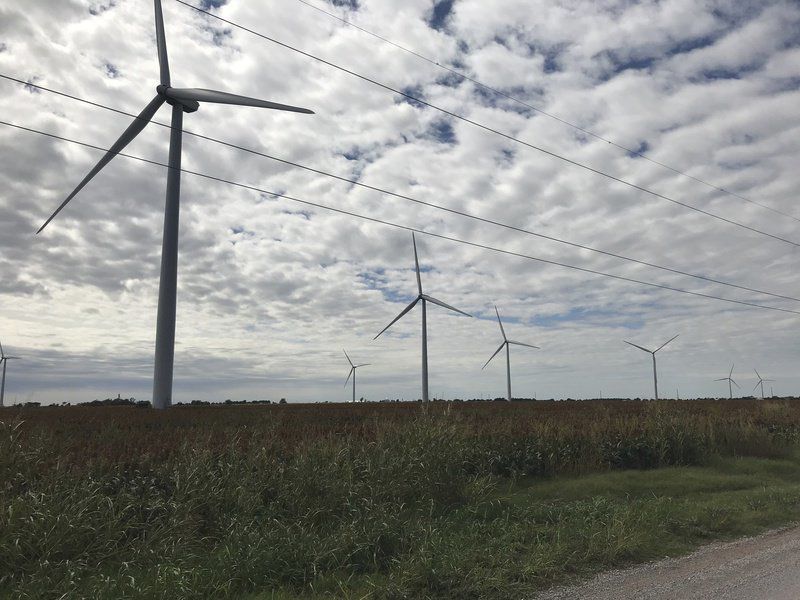On March 24, 2021, Chicago-based Invenergy announced it had finalized a construction loan that would allow it to complete the Traverse Wind Energy Center, a 999-megawatt energy facility located in Custer, Blaine and Kingfisher counties.
Invenergy
Traverse is one of three energy centers in the North Central Wind Energy Facilities, a group of projects that brought $2 billion in capital financing to Oklahoma.
“Sundance (Woods, Major and Alfalfa counties) is already operational,” said Bristi Cure, the director of renewable energy for Invenergy, said. “Maverick (Major, Kingfisher and Garfield counties) is close to finished and should become operational in October this year. Construction has already begun on Traverse, and we’re projecting a tentative open at the end of 2021 or early 2022.”
According to Cure, a 999-megawatt energy facility generates enough power to service more than 300,000 homes for a year. The combination of the three facilities will generate 1,485 megawatts. Cure said the construction loan is the largest loan Invenergy has closed to date, and the North Central facilities comprise the largest wind project in the U.S.
“The numbers are impressive, but we want to emphasize our commitment to Oklahoma and to the communities around these facilities,” Cure said. “Over the next 30 years, Invenergy will pay $680 million in ad valorem taxes, with $450 million dedicated to local school districts. The facilities will provide more than 40 full-time jobs, and none of that economic impact is counting the payments we make to the landowners where the turbines are located.”
NextEra
Juno Beach, Fla.-based NextEra has 17 operational wind farms in Oklahoma, including the Ponderosa facility near Balko. The first phase of its Skeleton Creek Wind Energy Center (Major, Alfalfa and Garfield counties) went online in December last year, and lead project manager Elinore Beitler said the company has several projects in the state still in the development phase.
Like Invenergy, NextEra has made a massive investment in Oklahoma, approximately $12.9 billion in capital investment since 2003. End-users don’t typically hear the names because the companies are essentially wholesale providers. They produce megawatts of energy to sell to utility companies, so customers never see the name on the bill. The wholesalers provide a valuable service inasmuch as utility companies don’t have the experience or resources to produce and operate large energy centers.
“We’re not technically ‘subcontractors,’” Beitler said, “but the analogy is kind of close to how we relate to the utility companies.”
NextEra will pay $60 million in leases to the landowners where the turbines are located, but it, too, emphasizes its overall commitment to the communities.
“We want to live up to the values we espouse as community partners,” Beitler said. “We’ve been here a lot since 2015. We’re in the community. Spring Hill Suites has basically been m y house; I’ve been there more than home the past 18 months. We love that we help provide jobs, and support youth organizations and businesses, and we’re looking forward to being more present, like we were before COVID.”
Future plans
As for the future, both companies are diving deeper into energy storage facilities, huge batteries that store renewable energy resources. NextEra already has one operational in the state. They also are looking to expand solar facilities.
“Oklahoma is an energy state,” Beitler said, “and because we work with renewable energy sources, we feel lucky to work in Oklahoma. We’ve been welcomed, and people have welcomed the alternative energy sources. We’re privileged to work with the landowners, local communities, organizations and government officials. It’s been a very positive experience.”
Wind turbines under construction southwest of Lahoma dominate the skyline Tuesday. “Oklahoma is an energy state,” said Elinore Beitler, with NextEra, a company that has invested in wind energy in the area. “We’ve been welcomed, and people have welcomed the alternative energy sources. We’re privileged to work with the landowners, local communities, organizations and government officials. It’s been a very positive experience.”
Article by Greg Horton – Enid News & Eagle 4.4.21

